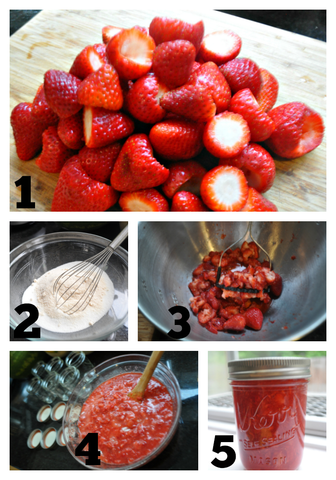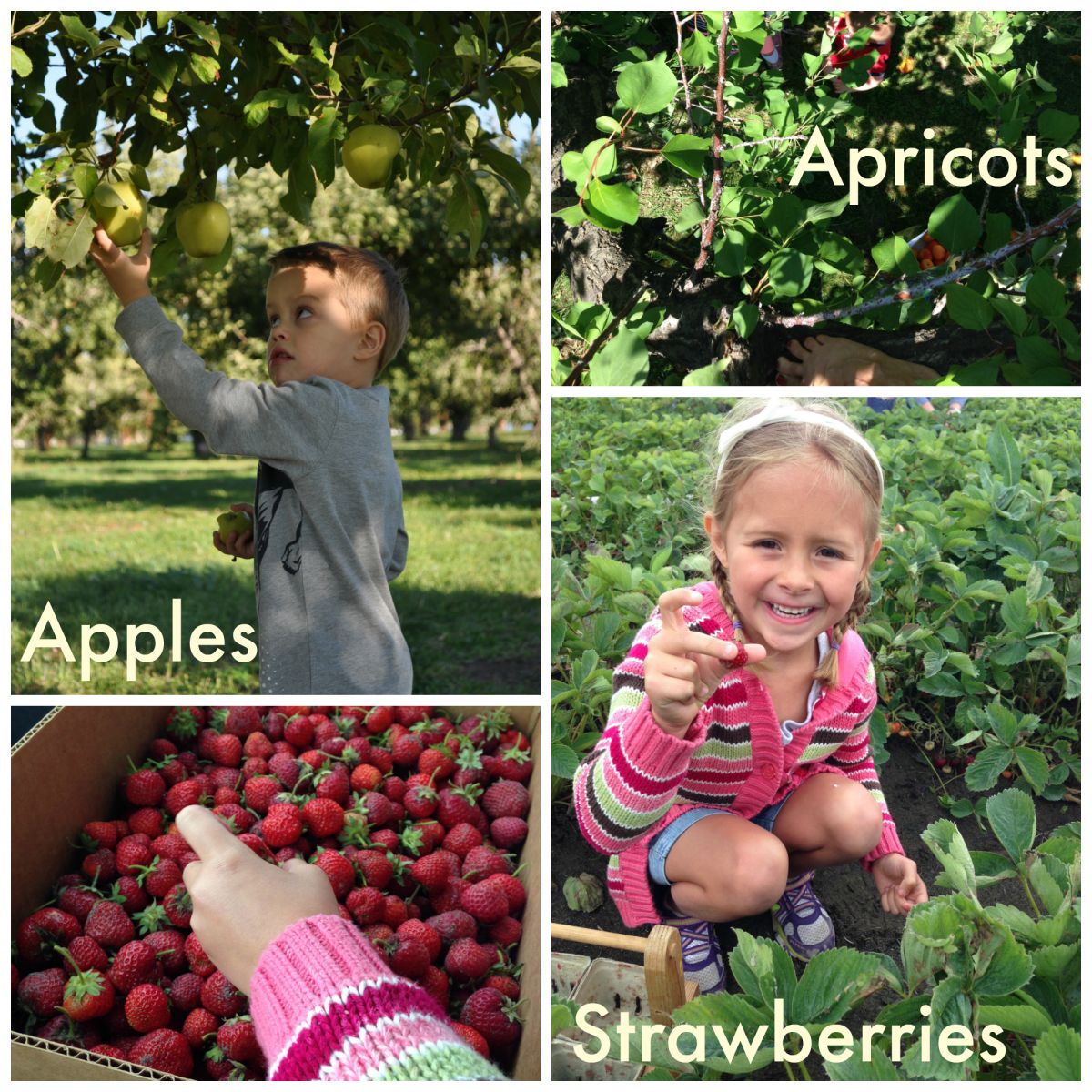Preserving Fruit

It’s warming up outside and peak growing season will soon be upon us. This time of year always finds my kids peering for progress in our strawberry bushes. For us, strawberries mark the beginning of a season of delicious, fresh fruit and pears end the season. There are some tasty months of fruit harvest between strawberries and pears, but here are some of my favorite ways to preserve and prolong the season all year round.
Jam
Few things capture the burst of fresh strawberry flavor better than strawberry freezer jam. It has a bright, jeweled color and pure taste that is unparalleled. Did I mention that it’s ridiculously easy to make? The whole process takes less than 30 minutes and involves no heat processing. If you try one method of fruit preservation this year, let it be freezer jam. It works wonderfully with any kind of berry or peaches.

1. Wash and hull the strawberries, 2. Mix sugar and pectin, 3. Mash strawberries, 4. Combine strawberries and sugar mixture, 5. Bottle, let sit for 30 minutes, and freeze. Detailed directions can be found on pectin packaging.
Other fruits fare better if they’re preserved in a cooked jam. My favorite cooked jam to make is apricot jam. Not only do I love the combination of tangy and sweet that apricot jam offers, it’s also a versatile jam that’s equally delicious on buttered toast or mixed with a little balsamic vinegar and ginger and used to baste grilled meat. Another perk of apricot jam is that you don’t have to remove the fruit’s peel. Simply wash, halve, remove the pit, chop in a food processor and you’re ready to cook your jam.

Blast from the past: 11 years ago, when we were newlyweds, someone gave my husband and me a large box of extra apricots from their orchard. We made hordes of apricot jam. In fact, I don’t think I bought or made jam for 2 years afterward.
Dehydrating
Dehydrating is an investment because it requires you to purchase a food dehydrator. A food dehydrator circulates warm air around sliced food until all the liquid in that food evaporates. My hands down favorite fruit to dehydrate is pears. Dried pears are divine and have a firmer texture than my second favorite, dried apples. Either option dries relatively quickly and make mess-free, portable snacks for traveling or lunches.
Canning Whole Fruit
Canning whole fruit is not for the faint of heart. It’s a timely process that requires attention to detail and a large initial investment to purchase all the necessary equipment. However, you can score amazing deals on canning equipment at garage sales and second-hand stores.
In years past, I’ve made price comparisons between home canned and store canned fruit. The disheartening truth is that store canned is always cheaper unless you can get an incredible price on fruit. If, like me, you don’t have your own fruit trees, you can get a better price on fruit by ordering directly from farmers, ordering in bulk groups with neighbors or friends, going to a U-pick farm, or joining a local gleaning group.

My kids are my best helpers as we harvest from U-pick farms.
I’ve canned tomatoes, peaches, pears, applesauce, salsas, and apple butter. Each different fruit has been an adventure and each has different requirements for processing safely. The National Center for Home Food Preservation website has a wealth of information on every home food preservation topic and can help guide you along the way with detailed instructions.
Whichever method you choose, have fun, and seize the opportunity this year to save the tastes of the season for you to enjoy year round.
